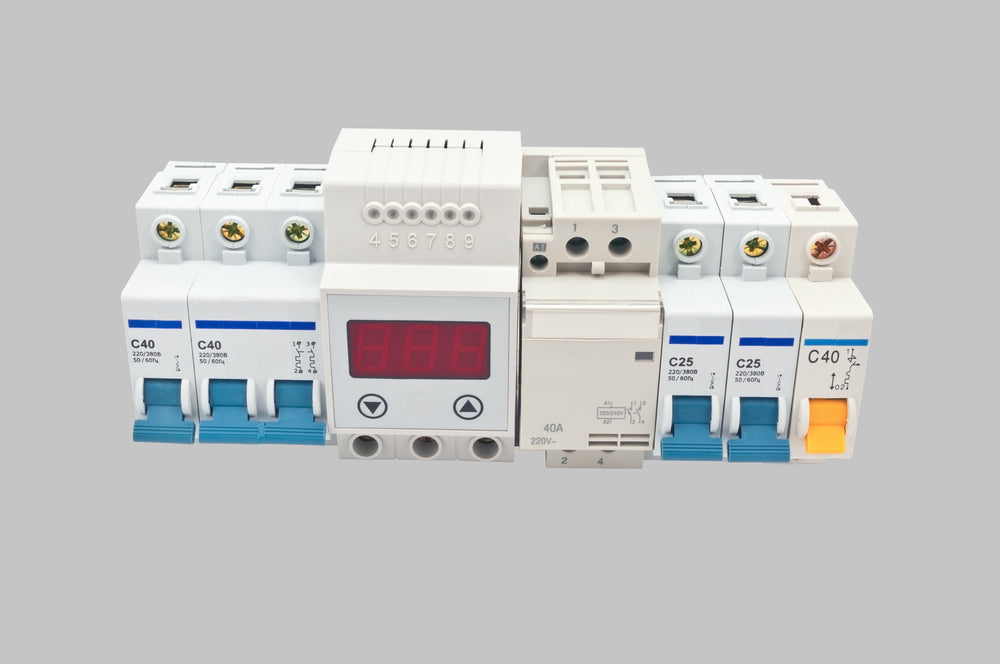
Circuit breakers are the quiet heroes of our electrical systems. They sit silently in your panel box, tirelessly guarding your home or office from the dangers of electrical overloads and short circuits. But like all mechanical devices, circuit breakers don’t last forever.
Knowing when to replace a circuit breaker is critical for safety and efficiency. It’s not just about responding to a power issue it’s about being proactive to prevent future hazards. So, if you're wondering whether that tripping breaker is normal or a warning sign, this guide is for you.
Why Circuit Breakers Matter
Your First Line of Electrical Defense
A circuit breaker is designed to shut off electrical flow in the event of an overload or short circuit. This prevents wiring from overheating, appliances from getting fried, and in the worst-case scenario fires.
Think of it as a smart switch that knows when something’s wrong. But just like your car’s brakes, the more it's used, the more wear it accumulates.
Not Designed to Last Forever
Most circuit breakers are built to last 15–30 years depending on usage, but various factorssuch as frequent tripping, poor installation, or outdated panel models can shorten their lifespan. That’s why it's important to recognize the signs of trouble early.
Sign #1: Frequent Tripping Without an Obvious Cause
Is Your Breaker Trying to Tell You Something?
An occasional trip isn’t a big deal. In fact, it means your breaker is doing its job. But frequent tripping especially when there’s no apparent overload should raise a red flag. It may signal a weakened breaker or one that can no longer handle even routine loads.
Check Before You Replace
Before jumping to replacement, check the appliances on that circuit. Unplug everything and try again. If the breaker still trips with no load, it's likely faulty. At this point, consult an electrician it’s time for a replacement.
Sign #2: Visible Damage, Burning Smell, or Warmth
What You See and Smell Matters
If your breaker switch is warm to the touch, smells like burnt plastic, or has visible scorch marks, these are immediate red flags. This kind of damage could indicate internal arcing, melted components, or even insulation breakdown.
Act Quickly Don’t Wait
A warm or damaged breaker is more than an inconvenience. It can lead to fires if left unattended. Turn off the power and call a licensed electrician immediately to assess and likely replace the breaker.
Sign #3: Breaker Won’t Stay Reset
The Stubborn Breaker Dilemma
If you reset the breaker and it won’t stay in the “on” position, it’s a sign that something is seriously wrong. Either the breaker is failing, or the circuit it protects has a serious fault like a ground fault or short.
Eliminate the Load, Then Test
First, unplug all devices on that circuit and try again. If the breaker still won’t reset, it likely needs replacing. Don’t continue flipping it back it’s trying to protect you.
Sign #4: Outdated or Recalled Breaker Models
When Age Isn’t Just a Number
Many homes built before the 1990s still use outdated panels and breakers, such as Federal Pacific Electric (FPE) or Zinsco brands. These models have been linked to safety issues and should be replaced regardless of current performance.
Look Up Recalls and Warnings
If you're unsure about your breaker brand or model, look it up. The Consumer Product Safety Commission (CPSC) and electricians’ forums often list recalled or problematic devices.
Best Practices for Replacing Circuit Breakers
Don’t DIY Unless You're Qualified
Circuit breakers are part of your main electrical system. If you’re not trained in electrical work, replacing a breaker yourself can be dangerous. Always hire a licensed electrician for inspection and replacement.
Use the Right Replacement
Never use a breaker that’s not rated for your specific panel. Breakers are not universally interchangeable even if they look the same. The wrong model can lead to overheating or faulty trips.
Consider Panel Upgrades
If you're replacing breakers frequently, or if your panel is more than 25 years old, it might be time to upgrade the entire panel. Newer panels are more efficient, have better safety features, and are often required to meet modern electrical codes.
Proactive Maintenance Tips
Test Your Breakers Annually
Some types of breakers, especially GFCIs and AFCIs, have a test button. Press it monthly to ensure it's functioning. For standard breakers, observe how often they trip and check for any signs of wear or aging.
Label Everything Clearly
When you replace a breaker, take the time to label the corresponding circuit properly. It saves time in emergencies and helps future electricians understand your system faster.
Final Thoughts: Know the Signs, Protect Your Space
Circuit breakers may not get much attention until something goes wrong. But the truth is, they’re one of the most important components in your home or office. By learning the signs of failure and understanding best practices for replacement, you're doing more than protecting wires you're protecting people, property, and peace of mind.
So if your breaker has been tripping too often, feels warm, or just feels “off,” don’t ignore it. Your future self will thank you for handling it the smart way safely and proactively.








